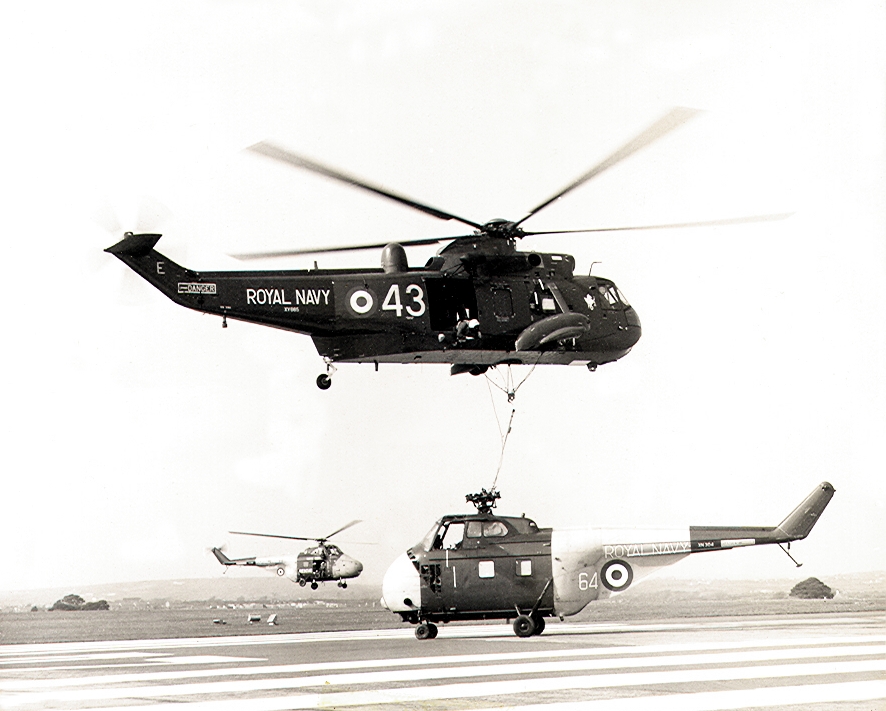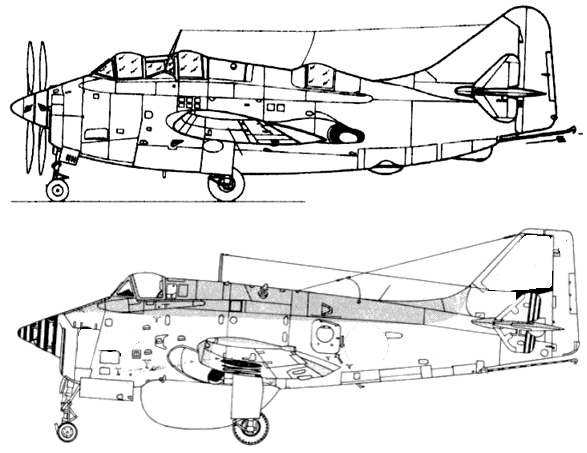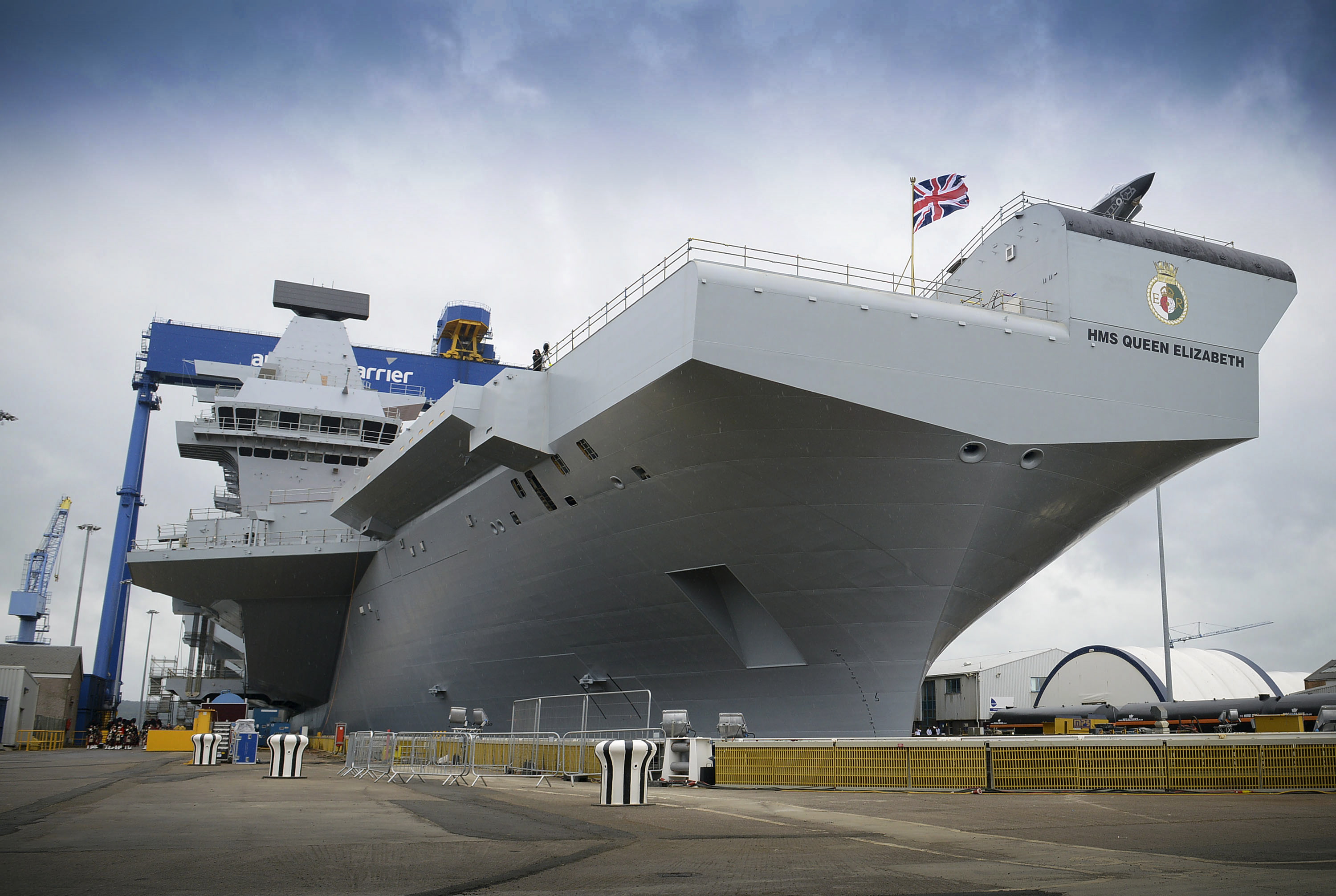|
Searchwater
Searchwater was a maritime surveillance radar developed by Thorn EMI under project P1149. This type of radar has been in service with the Royal Air Force Hawker Siddeley Nimrod aboard the MR2 variant since the 1970s. The retirement of the Royal Navy's fleet carriers in 1978 meant that the airborne early warning (AEW) capable Fairey Gannet was also withdrawn from service. During the Falklands War, a number of warships were lost due to the lack of an indigenous AEW presence. Consequently, a greatly accelerated project was started to equip Westland Sea King helicopters with a slightly modified version of the system known as Searchwater LAST (Low Altitude Surveillance Task). The radome was mounted in a distinctive inverted cupola on a swivel arm attached to the right side of the fuselage just aft of the main door. This arm allowed the helicopter to lower the radar below the fuselage in flight and to raise it for landing. Searchwater was retired from service when the last of the Royal ... [...More Info...] [...Related Items...] OR: [Wikipedia] [Google] [Baidu] |
Westland Sea King
The Westland WS-61 Sea King is a British licence-built version of the American Sikorsky S-61 helicopter of the same name, built by Westland Helicopters. The aircraft differs considerably from the American version, with Rolls-Royce Gnome engines (derived from the US General Electric T58), British-made anti-submarine warfare systems and a fully computerised flight control system. The Sea King was primarily designed for performing anti-submarine warfare (ASW) missions. A Sea King variant known as the Commando was devised by Westland to serve as a troop transport. In British service, the Westland Sea King provided a wide range of services in both the Royal Navy and the Royal Air Force. As well as wartime roles in the Falklands War, the Gulf War, the Bosnian War, the Iraq War and the Afghanistan War, the Sea King is perhaps most well known in its capacity as a Royal Navy Search and Rescue (red and grey livery) and RAF Search and Rescue Force (yellow livery) helicopter. The S ... [...More Info...] [...Related Items...] OR: [Wikipedia] [Google] [Baidu] |
BAE Systems Nimrod MRA4
The BAE Systems Nimrod MRA4 was a planned maritime patrol and attack aircraft intended to replace the Hawker Siddeley Nimrod MR2. The rebuilt aircraft would have extended the operating life of the Nimrod fleet by several decades and significantly improved the aircraft by installing more efficient Rolls-Royce BR700 turbofan jet engines to almost double the flight range. The conversion of the flight deck to a digital glass cockpit would have simplified control operations and reduced crew requirements. New detection systems were to be installed, as well as additional weapons for anti-submarine warfare. However, the project was subject to significant delays due to cost overruns and contract re-negotiations. This was partly due to difficulties combining refurbished Nimrod MR2 fuselages, which had not been built to a common standard, with newly built wings. The numbers of aircraft to be procured fell from twenty-one to nine over a course of years, while costs continued to climb. ... [...More Info...] [...Related Items...] OR: [Wikipedia] [Google] [Baidu] |
British Aerospace Nimrod AEW3
The British Aerospace Nimrod AEW3 was a proposed airborne early warning (AEW) aircraft which was to provide airborne radar cover for the air defence of the United Kingdom by the Royal Air Force (RAF). The project was designed to use the existing Nimrod airframe, in use with the RAF as a maritime patrol aircraft, combined with a new radar system and avionics package developed by Marconi Avionics. The Nimrod AEW project proved to be hugely complex and expensive as a result of the difficulties of producing new radar and computer systems and integrating them successfully into the Nimrod airframe. The project was eventually cancelled, with the RAF instead purchasing new build Boeing E-3 Sentry aircraft to fulfil the AEW requirement. Development Background In the mid 1960s, following the development of the Grumman E-2 Hawkeye carrier-borne AEW aircraft and its associated systems, the British government began looking for a radar system that could provide airborne early warning f ... [...More Info...] [...Related Items...] OR: [Wikipedia] [Google] [Baidu] |
Hawker Siddeley Nimrod
The Hawker Siddeley Nimrod is a retired maritime patrol aircraft developed and operated by the United Kingdom. It was an extensive modification of the de Havilland Comet, the world's first operational jet airliner. It was originally designed by de Havilland's successor firm, Hawker Siddeley; further development and maintenance work was undertaken by Hawker Siddeley's own successor companies, British Aerospace and, later, BAE Systems. Designed in response to a requirement issued by the Royal Air Force (RAF) to replace its fleet of ageing Avro Shackletons, the ''Nimrod MR1''/''MR2''s were primarily fixed-wing aerial platforms for anti-submarine warfare (ASW) operations; secondary roles included maritime surveillance and anti-surface warfare. It served from the early 1970s until March 2010.Cook, James"Final air miles for 'spy in the sky' crews."''BBC,'' 26 March 2010. Retrieved 20 October 2010. The intended replacement was to be extensively rebuilt Nimrod MR2s, designated Nimr ... [...More Info...] [...Related Items...] OR: [Wikipedia] [Google] [Baidu] |
Fairey Gannet AEW
The Fairey Gannet AEW.3 is a variant of the Fairey Gannet anti-submarine warfare aircraft intended to be used in the airborne early warning (AEW) role on aircraft carriers of the Royal Navy. It was introduced to service in 1959 to replace the obsolete Douglas A-1 Skyraider, Douglas Skyraider, and was intended as an interim solution until the planned introduction of a new, purpose built AEW platform for use on the planned CVA-01 aircraft carriers. Neither the new aircraft carriers nor the new AEW aircraft were proceeded with, and the Gannet AEW.3 remained in service until the last aircraft carrier that could operate it was retired in 1978. Design and development In the late 1950s, the Royal Navy operated the piston-engined Douglas A-1 Skyraider from its aircraft carriers in the Airborne early warning and control, AEW role. However, the Skyraider was a design that originated during the Second World War. It entered service with the RN in 1951 but, owing to its World War II vinta ... [...More Info...] [...Related Items...] OR: [Wikipedia] [Google] [Baidu] |
Seaspray (radar)
Seaspray is series of a British airborne maritime radar systems, initially developed by Ferranti for the Lynx helicopter, built in Edinburgh. It is used primarily as an Air-to-Surface Vessel radar in the anti-submarine and anti missile boat roles. The combination of Lynx and Seaspray has been an export success and operates in numerous armed forces around the world, often along with the related Sea Skua short-range missile. A new series, Seaspray 7000, was launched in 2002. This is an all-new design sharing only the name with the original design. History Original Seaspray In 1967, Egyptian missile boats sank the Israeli destroyer ''Eilat'', immediately revealing the serious threat these new weapons presented. Considering the problem, it appeared that there was no simple ship-mounted solution. Although the Seacat missile had been designed with a secondary anti-shipping role, it lacked the range needed to attack the stand-off missiles on the boats. Sea Dart could also be used in thi ... [...More Info...] [...Related Items...] OR: [Wikipedia] [Google] [Baidu] |
Queen Elizabeth-class Aircraft Carrier
The ''Queen Elizabeth'' class is a class of two aircraft carriers of the United Kingdom's Royal Navy which are the central components of the UK Carrier Strike Group. The lead ship, , was named on 4 July 2014, in honour of Elizabeth I. She was commissioned on 7 December 2017. The second, , was launched on 21 December 2017, and was commissioned on 10 December 2019. The contract for the vessels was announced in July 2007, ending several years of delay over cost issues and British naval shipbuilding restructuring. The contracts were signed one year later on 3 July 2008, with the Aircraft Carrier Alliance, a partnership formed with Babcock International, Thales Group, A&P Group, the UK Ministry of Defence and BAE Systems. In 2014 the UK Government announced that the second carrier would be brought into service, ending years of uncertainty surrounding its future. This was confirmed by the Strategic Defence and Security Review 2015, with at least one carrier being available at any ... [...More Info...] [...Related Items...] OR: [Wikipedia] [Google] [Baidu] |
Sea King ASaC Near Portreath
The sea, connected as the world ocean or simply the ocean, is the body of salty water that covers approximately 71% of the Earth's surface. The word sea is also used to denote second-order sections of the sea, such as the Mediterranean Sea, as well as certain large, entirely landlocked, saltwater lakes, such as the Caspian Sea. The sea moderates Earth's climate and has important roles in the water, carbon, and nitrogen cycles. Humans harnessing and studying the sea have been recorded since ancient times, and evidenced well into prehistory, while its modern scientific study is called oceanography. The most abundant solid dissolved in seawater is sodium chloride. The water also contains salts of magnesium, calcium, potassium, and mercury, amongst many other elements, some in minute concentrations. Salinity varies widely, being lower near the surface and the mouths of large rivers and higher in the depths of the ocean; however, the relative proportions of dissolved salts vary li ... [...More Info...] [...Related Items...] OR: [Wikipedia] [Google] [Baidu] |
Aircraft Radars
An aircraft is a vehicle that is able to fly by gaining support from the air. It counters the force of gravity by using either static lift or by using the dynamic lift of an airfoil, or in a few cases the downward thrust from jet engines. Common examples of aircraft include airplanes, helicopters, airships (including blimps), gliders, paramotors, and hot air balloons. The human activity that surrounds aircraft is called ''aviation''. The science of aviation, including designing and building aircraft, is called ''aeronautics.'' Crewed aircraft are flown by an onboard pilot, but unmanned aerial vehicles may be remotely controlled or self-controlled by onboard computers. Aircraft may be classified by different criteria, such as lift type, aircraft propulsion, usage and others. History Flying model craft and stories of manned flight go back many centuries; however, the first manned ascent — and safe descent — in modern times took place by larger hot-air bal ... [...More Info...] [...Related Items...] OR: [Wikipedia] [Google] [Baidu] |
Ferranti
Ferranti or Ferranti International plc was a UK electrical engineering and equipment firm that operated for over a century from 1885 until it went bankrupt in 1993. The company was once a constituent of the FTSE 100 Index. The firm was known for work in the area of power grid systems and defence electronics. In addition, in 1951 Ferranti began selling an early computer, the Ferranti Mark 1. The Belgian subsidiary lives on as Ferranti Computer Systems and as of 1994 is part of the Nijkerk Holding. History Beginnings Sebastian Ziani de Ferranti established his first business Ferranti, Thompson and Ince in 1882. The company developed the Ferranti-Thompson Alternator. Ferranti focused on alternating current power distribution early on, and was one of the few UK experts. To avoid confusion, he is often referred to as Dr Ferranti to distinguish him from the Ferranti company itself. In 1885 Dr Ferranti established a new business, with Francis Ince and Charles Sparks as partners, ... [...More Info...] [...Related Items...] OR: [Wikipedia] [Google] [Baidu] |
Inverse Synthetic Aperture Radar
Inverse synthetic-aperture radar (ISAR) is a radar technique using radar imaging to generate a two-dimensional high resolution image of a target. It is analogous to conventional SAR, except that ISAR technology uses the movement of the target rather than the emitter to create the synthetic aperture. ISAR radars have a significant role aboard maritime patrol aircraft to provide them with radar image of sufficient quality to allow it to be used for target recognition purposes. In situations where other radars display only a single unidentifiable bright moving pixel, the ISAR image is often adequate to discriminate between various missiles, military aircraft, and civilian aircraft. Radar cross-section imaging Images of the target region produced by ISAR can be a useful tool in locating scattering regions on the target. ISAR images are often produced by rotating the target and processing the resultant Doppler histories of the scattering centers. If the target rotates in azimuth at a ... [...More Info...] [...Related Items...] OR: [Wikipedia] [Google] [Baidu] |
Synthetic Aperture Radar
Synthetic-aperture radar (SAR) is a form of radar that is used to create two-dimensional images or three-dimensional reconstructions of objects, such as landscapes. SAR uses the motion of the radar antenna over a target region to provide finer spatial resolution than conventional stationary beam-scanning radars. SAR is typically mounted on a moving platform, such as an aircraft or spacecraft, and has its origins in an advanced form of side looking airborne radar (SLAR). The distance the SAR device travels over a target during the period when the target scene is illuminated creates the large ''synthetic'' antenna aperture (the ''size'' of the antenna). Typically, the larger the aperture, the higher the image resolution will be, regardless of whether the aperture is physical (a large antenna) or synthetic (a moving antenna) – this allows SAR to create high-resolution images with comparatively small physical antennas. For a fixed antenna size and orientation, objects which are ... [...More Info...] [...Related Items...] OR: [Wikipedia] [Google] [Baidu] |




%2C_UK_-_Air_Force_AN1047063.jpg)



